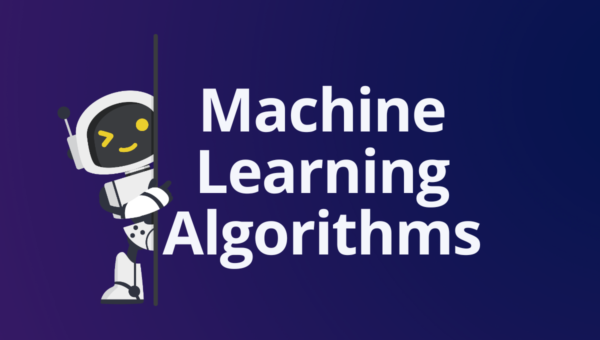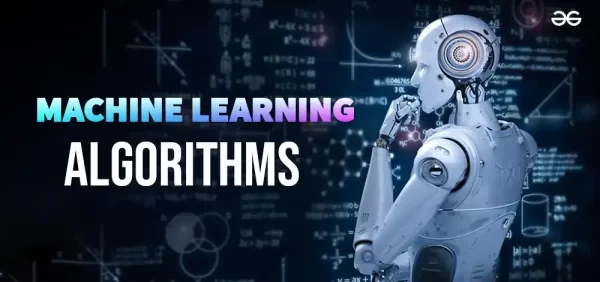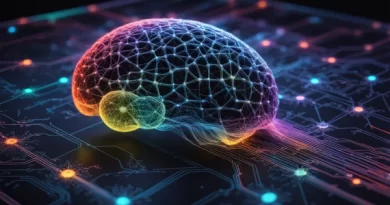Unleashing the Power of Machine Learning Algorithms: A Journey into the Future
In the rapidly advancing technological landscape, machine learning (ML) emerges as a pivotal force, revolutionizing industries and expanding the horizons of data-driven innovation. As we delve deeper into the digital age, understanding the intricacies of machine learning algorithms becomes increasingly essential. This blog will explore the captivating realm of machine learning algorithms, their diverse applications, and their role in shaping the future.
What are Machine Learning Algorithms?
Machine learning algorithms are the core components of artificial intelligence (AI) systems. They empower computers to learn from data, discern patterns, and make decisions with minimal human intervention. These algorithms fall into three primary categories:
- Supervised Learning: Involves training a model on labeled data, where the input-output relationships are known. The algorithm learns to map inputs to outputs, enabling it to predict new, unseen data. Examples include linear regression, decision trees, and support vector machines (SVM).
- Unsupervised Learning: Deals with unlabeled data, where the algorithm investigates the data to uncover hidden patterns and structures. Common techniques include clustering (e.g., K-means) and dimensionality reduction (e.g., Principal Component Analysis – PCA).
- Reinforcement Learning: Focuses on training models to make a series of decisions by interacting with an environment. The algorithm learns from the outcomes of its actions, aiming to maximize cumulative rewards. Notable algorithms include Q-learning and deep reinforcement learning.
Cutting-Edge Applications of Machine Learning Algorithms:
The adaptability of machine learning algorithms has led to pioneering applications across multiple domains:
- Healthcare: ML algorithms are revolutionizing healthcare by enabling early diagnosis, personalized treatment plans, and predictive analytics. For instance, deep learning models can analyze medical images to detect diseases like cancer with remarkable accuracy.
- Finance: In the financial sector, machine learning algorithms are employed for fraud detection, risk assessment, and algorithmic trading. These algorithms can sift through vast amounts of data to identify fraudulent activities or predict market trends.
- Autonomous Vehicles: Self-driving cars rely on machine learning algorithms to process sensor data, recognize objects, and make real-time decisions. These algorithms are crucial for ensuring the safety and efficiency of autonomous vehicles.
- Natural Language Processing (NLP): NLP algorithms enable machines to understand, interpret, and generate human language. Applications include chatbots, sentiment analysis, and machine translation, enhancing human-computer interaction.
- Recommendation Systems: Platforms like Netflix and Amazon use machine learning algorithms to analyze user behavior and preferences, providing personalized recommendations that enhance user experience.

The Future of Machine Learning Algorithms:
As technology progresses, the future of machine learning algorithms holds immense promise, with several trends set to drive further innovation:
- Explainable AI (XAI): There is a growing emphasis on making machine learning models more transparent and interpretable. XAI aims to provide insights into how algorithms make decisions, fostering trust and accountability.
- Federated Learning: This approach enables training models across decentralized devices while preserving data privacy. Federated learning has significant implications for industries like healthcare and finance, where data security is paramount.
- AutoML: Automated Machine Learning (AutoML) aims to democratize ML by automating the end-to-end process of applying machine learning to real-world problems. AutoML tools can automatically select the best algorithms and tune hyperparameters, making ML accessible to non-experts.
- Quantum Machine Learning: The convergence of quantum computing and machine learning promises to solve complex problems at unprecedented speeds. Quantum machine learning algorithms leverage quantum bits (qubits) to perform computations that are infeasible for classical computers.
Conclusion:
Machine learning algorithms are at the forefront of the AI revolution, driving innovations that are transforming our world. From healthcare and finance to autonomous vehicles and NLP, these algorithms are unlocking new possibilities and shaping the future of technology. Staying informed about the latest advancements and trends in machine learning will be crucial for harnessing its full potential.
FAQs:
1. What are machine learning algorithms?
Machine learning algorithms are the mathematical frameworks that enable computers to learn from data, identify patterns, and make decisions with minimal human intervention. They are fundamental to AI systems, allowing machines to perform tasks that typically require human intelligence.
2. How are machine learning algorithms classified?
Machine learning algorithms are generally categorized into three main types:
- Supervised Learning: Algorithms are trained on labeled data to make predictions.
- Unsupervised Learning: Algorithms examine unlabeled data to discover underlying patterns.
- Reinforcement Learning: Algorithms learn by interacting with an environment to maximize cumulative rewards.
- Linear Regression: Used for predicting continuous outcomes.
- Decision Trees: Used for both classification and regression tasks.
- Support Vector Machines (SVM): Primarily used for classification tasks.
4. What are popular techniques in unsupervised learning?
Popular unsupervised learning techniques include:
- K-means Clustering: Groups data into clusters based on similarities.
- Principal Component Analysis (PCA): Reduces data dimensionality while preserving key variance.
5. How does reinforcement learning differ from other machine learning types?
Reinforcement learning is distinct in that it trains models through continuous interaction with an environment. The algorithm learns by receiving rewards or penalties for actions, aiming to maximize the overall reward.
6. What are some real-world applications of machine learning algorithms?
Machine learning algorithms are applied in various fields, including:
- Healthcare: Early disease detection, personalized treatments.
- Finance: Fraud detection, risk management, algorithmic trading.
- Autonomous Vehicles: Processing sensor data, real-time decision-making.
- Natural Language Processing (NLP): Chatbots, sentiment analysis, translation.
- Recommendation Systems: Personalized recommendations on platforms like Netflix and Amazon.
7. What is Explainable AI (XAI) and why is it significant?
Explainable AI (XAI) encompasses methods and techniques that make machine learning models more transparent and interpretable. XAI is crucial for building trust and accountability, as it helps users understand how decisions are made by algorithms.
8. How does federated learning improve data privacy?
Federated learning enhances data privacy by allowing models to be trained across decentralized devices without sharing raw data. This approach is especially valuable in sectors like healthcare and finance, where data security is critical.
9. What is Automated Machine Learning (AutoML)?
Automated Machine Learning (AutoML) simplifies the application of machine learning to real-world problems by automating the end-to-end process. AutoML tools can automatically choose the best algorithms and optimize hyperparameters, making machine learning more accessible to non-experts.
10. What potential does quantum machine learning hold?
Quantum machine learning merges quantum computing with machine learning to address complex problems at unprecedented speeds. By leveraging quantum bits (qubits), these algorithms can perform computations that are beyond the reach of classical computers, offering new possibilities in data analysis.




